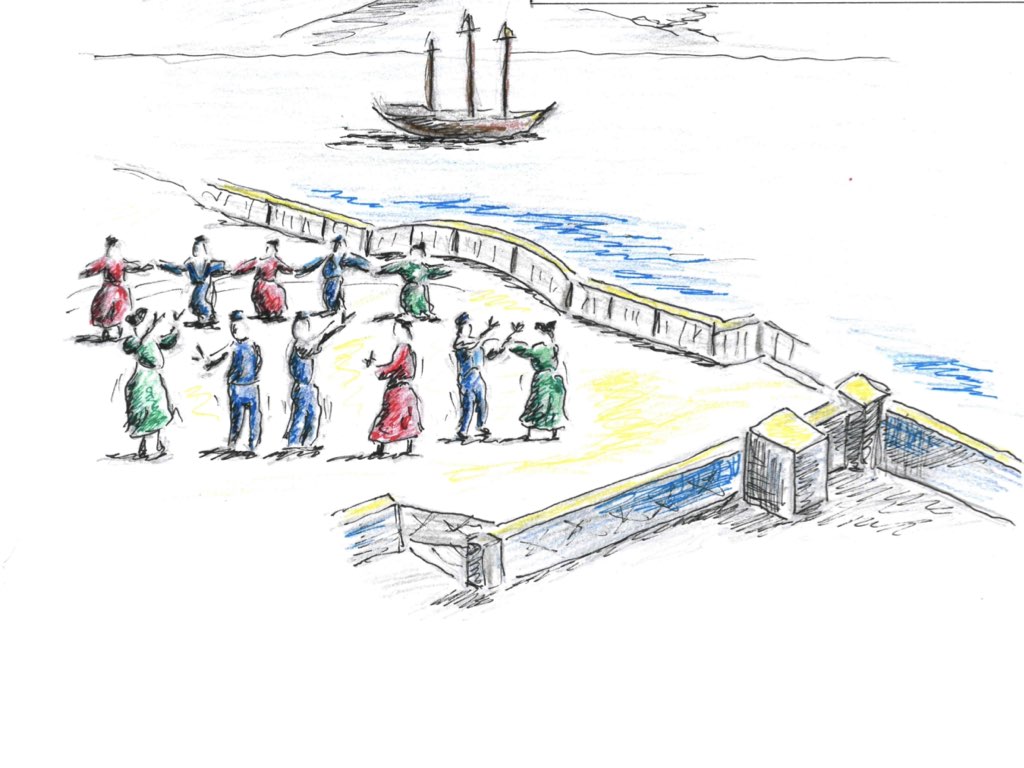Link: Carnegie Hall
This is a traditional sea song, which can also be danced, originating from the island of Naxos (Cyclades, Aegean Sea); The purpose of song was to sing for the sea in order for it to stay calm and protect the men who dived very deep inside to collect sponges. The main occupation of people living on islands was to fish for sponges, something which was very dangerous, especially when the sea was very rough.
The first half of the song is in the voice of a sailor’s family praying for the seas to be kind when he goes off. The second half of the song is in the voice of the sailor, wondering if he will make it home to see his family again.
Text
Thalassa, thalassa, tous
Thalassinous, thalassaki mou (x2)
Mi tous thalassothernis.
Thalassonome
Yia sena ksimeronome. (x2)
Chorus:
Thalassa ki almiro nero,
Na se ksehaso then boro.
Na se ksehaso then boro,
Thalassa ki almiro nero.
Rothostamo, rothostamo
Na yinese, thalassaki mou (x2)
Tin borka tous na renis
Thalassaki mou
Ke fere to poulaki mou. (x2)
Helithona, xelithonakia ke poulia,
Thalassaki mou (x2)
Pou hamilopetate,
Thalassaki mou
Ke fere, to poulaki mou. (x2)
An thite tin, an thite tin
Agapi mou, thalassaki mou (x2)
Na mou tin heretate
Thalassaki mou
Ke fere to poulaki mou. (x2)
Translation
Sea, sea
The sailors, my darling sea
Don’t beat them with your waves.
I’m out at sea
I stay awake all night thinking of you.
Chorus:
Sea and salt water,
I cannot forget you.
I cannot forget you,
Sea and salt water.
Turn into rosewater
My darling sea
To sprinkle on their hair
My darling sea
Bring my bird back to me.
Swallows and birds,
My darling sea
You that fly close to the ground,
My darling sea
Bring my bird back to me.
If you see, if you see
My love, my darling sea
Give her my greetings
My darling sea
Bring my bird back to me.
Meter and Rhythm in “Thalassaki Mou”
In music, the meter is the number of beats in each measure determined by the pattern of strong and weak beats. In “Thalassaki Mou,” there are seven beats in every measure.
There is a pattern of strong beats and weak beats that form a distinctive meter.
The strong beats fall on beats 1, 4, and 6.
Another way to think about it is in three groups of notes, as follows:
1 2 3 1 2 1 2 or 1 2 3
Listen to “Thalassaki Mou” and clapping on the strong beats. Can you do it?

Αυτή η εργασία χορηγείται με άδεια Creative Commons Αναφορά Δημιουργού – Μη Εμπορική Χρήση – Παρόμοια Διανομή 4.0 Διεθνές .
Views: 14



